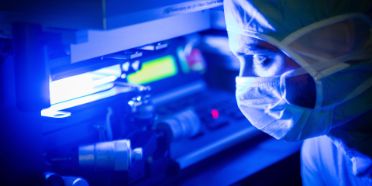Our expertise and infrastructure is available to external partners for student theses, research projects or joint projects funded by third parties. Please contact us if you require more details or you can find further information here:
Areas of expertise
We focus on the following key topics:
We use our short (ns) and ultra-short (ps, fs) pulsed lasers to remove layers from and structure various materials, such as metals, ceramics, semi-conductors, plastics, glass and crystals. Our priority is optimising the material removal process and increasing its efficiency.
We draw up strategies and methods for the targeted creation of surface structures with dimensions from sub-µm to the mm range.
- Customer-specific process development
Our broad, in-depth expertise means that we can develop and implement processes specifically optimised to your application.
- High-precision and rapid processing methods
By synchronising scanners (galvo or polygon scanners) with the laser pulse with repetition rates of up to several MHz, we achieve highest levels of precision which cannot be achieved with conventional methods. A patented technology developed in-house is deployed for galvo scanners.
- Control and combination of axes for laser processing
In tandem with I3S, our sister institute, we combine scanner systems (galvo and polygon) with various mechanical axes (linear and rotation axes) to optimally implement your processes. We use our own synchronisation technology for the highest level of precision.
We test and qualify new components (laser and beam guidance) specifically for laser micro-processing applications
- High-temperature ellipsometry
We can measure both the refraction and absorption index of metals based on temperature from solid to liquid states.


